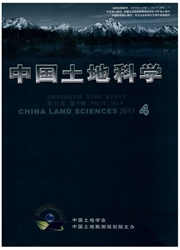

 中文摘要:
中文摘要:
在对乡村人居环境质量评价指标体系讨论的基础上,运用熵值法及空间分析方法对江苏省乡村人居环境质量进行评价并探讨其空间格局特征。结果表明:江苏省乡村人居环境质量呈现南高北低的空间分异格局;各分指标的空间格局存在差异;同时乡村人居环境质量表现出苏锡常地区的高值集聚,苏北地区的低值集聚态势。为提高乡村人居环境水平并缩小人居环境的区域差异,针对不同地区提出相应建议。
 英文摘要:
英文摘要:
This paper discussed the evaluation index system firstly, and then used the entropy method and spatial analysis to evaluate rural human settlements and analyze the spatial pattern characteristics. Major conclusions could be drawn as follows. The quality of rural human settlements taked on the characteristic that the score is high in the south and low in the north; sub indicators presented different features of spatial differentiation pattern; meanwhile, high concentration located in Su- Xi- Chang area, low concentration lied in the north of Jiangsu area; in order to improve the level of rural human settlements and narrow the regional differences, we put forward the corresponding suggestion to different regions.
 同期刊论文项目
同期刊论文项目
 同项目期刊论文
同项目期刊论文
 期刊信息
期刊信息
